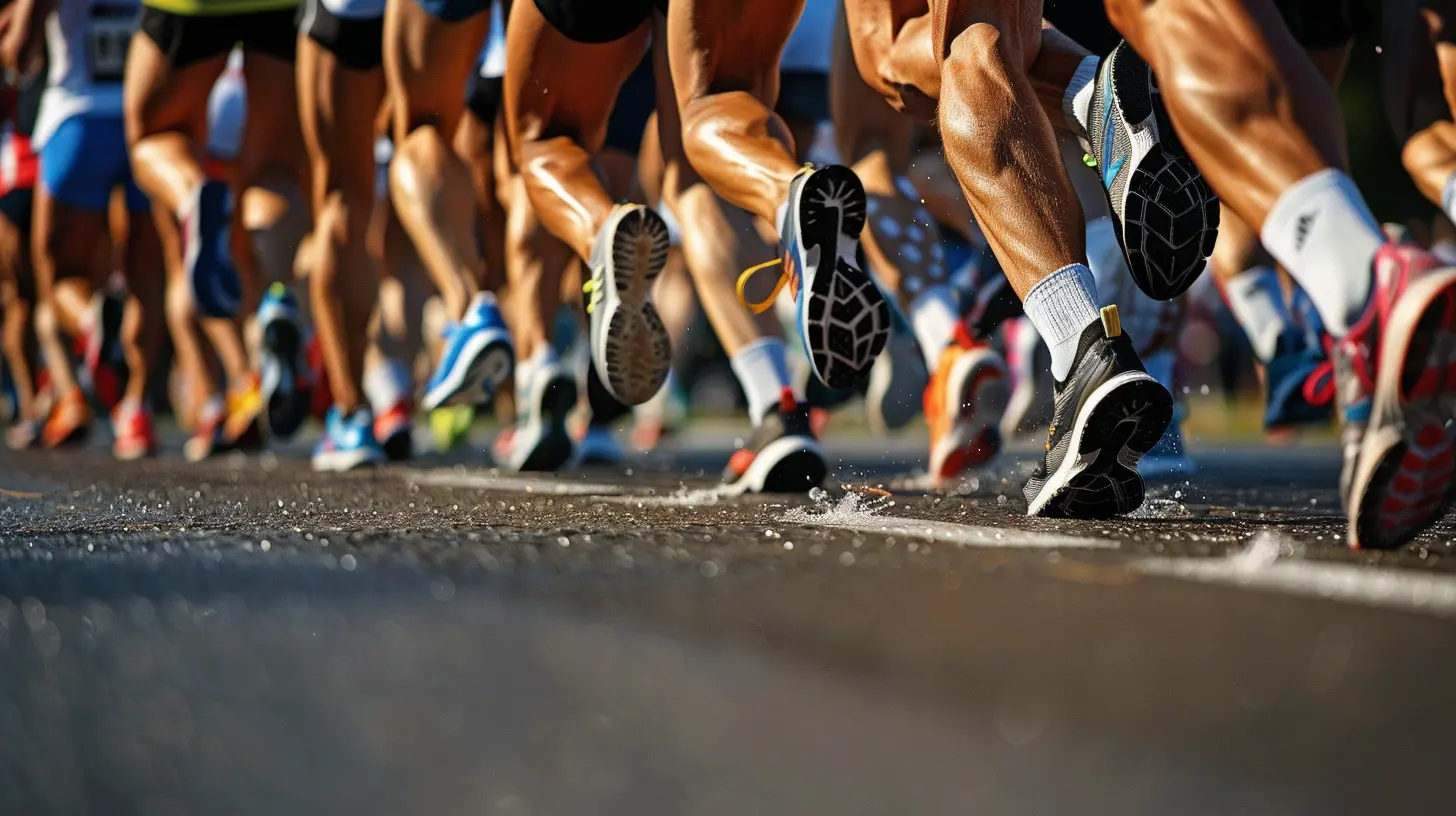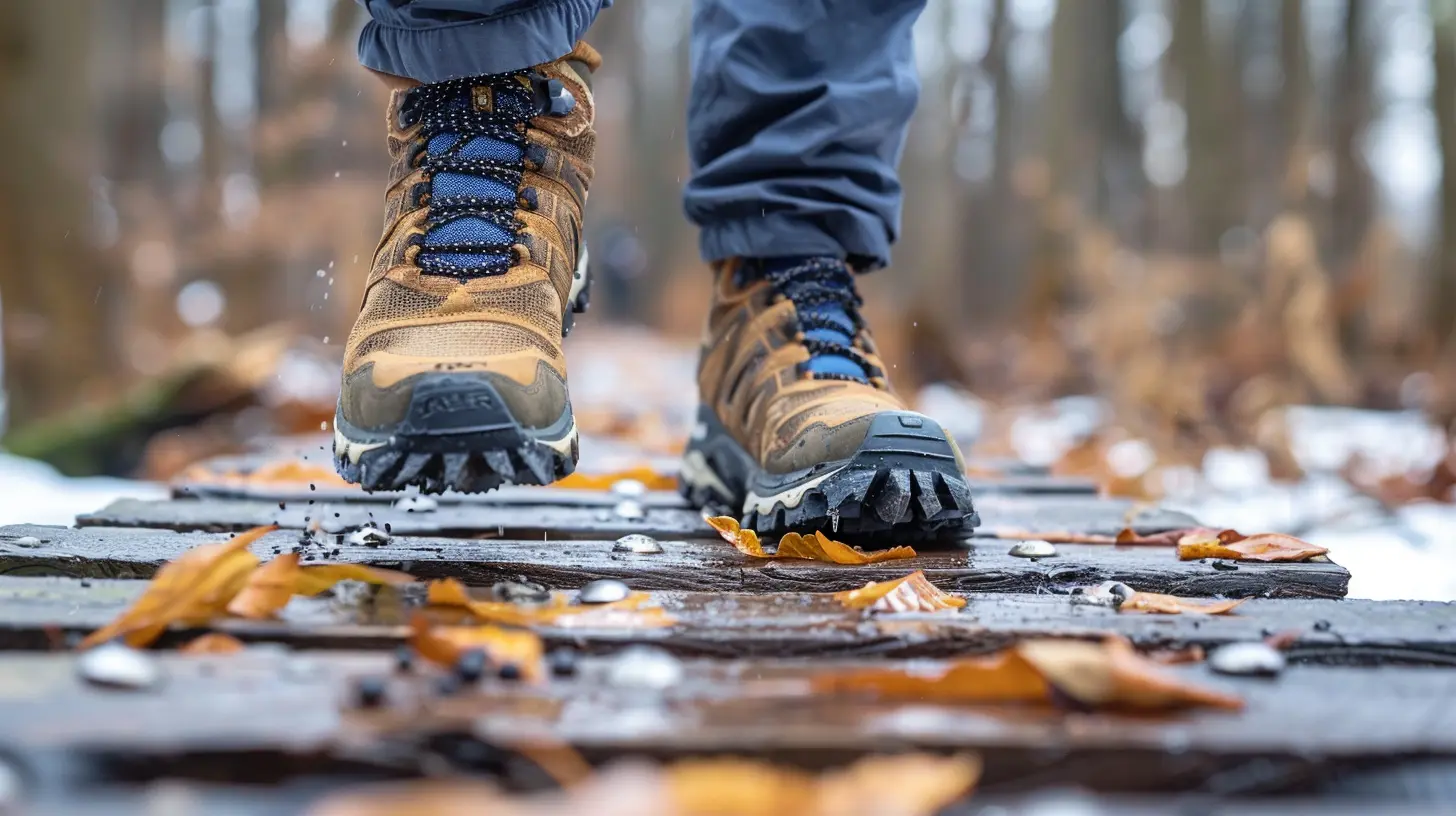Running on Trails vs. Pavement: Which is Better for You?
9 July 2025
Ah, the age-old question that divides the running world into two passionate camps: Team Pavement and Team Trail. It’s like the Coke vs. Pepsi of the fitness world — both have strong opinions, cult followings, and enough comparison articles to outnumber your unread work emails.
So, which one is better for you? Should you be pounding the concrete jungle streets like a city slicker or hopping across rocks and roots like a mountain goat on espresso?
Let’s lace up, stretch out those hammies, and dig deep into the wildly controversial, shockingly nuanced, and a tad dramatic debate of running on trails versus pavement. Spoiler alert: One does not simply jog away from this argument.
The Great Outdoors vs. The Urban Grind
🌲 Trail Running: Nature’s Obstacle Course
Picture this: birds chirping, leaves rustling, the scent of pine in the air. Sounds like a spa day, right? Well, toss in some mud, uneven terrain, sudden hills, the occasional squirrel ambush, and now you’ve got trail running.Trail running is essentially regular running with a side order of adventure and a sprinkle of “I hope I don’t trip and faceplant.” It’s fun. It’s unpredictable. And let’s be honest—it makes you look a lot cooler on Instagram.
🚦 Pavement Running: Predictable Perfection
Now let’s set the stage for pavement running. It's the immaculate grid of sidewalks or the endless loop of your neighborhood road. Nothing too exciting, right? But hey, at least you know exactly how many inches there are between you and a twisted ankle.Running on pavement is the go-to for urban athletes, time-crunched professionals, or anyone who gets lost trying to follow trail markers (we see you, Steve).
Impact and Injury: What’s Hurting You More?
🦴 Pavement = High Impact = Ouch?
Let’s not sugarcoat it: running on pavement is like slamming your joints into a rock-solid surface over and over again. Sounds delightful, doesn't it? Your knees, hips, and lower back might start sending you hate mail if you’re clocking serious miles on concrete day after day.Yep, pavement is consistent, but so is gravity—and those hard landings can lead to all the greatest hits: shin splints, knee pain, and the dreaded plantar fasciitis.
⚠️ Trail = Twists, Turns, and Tree Roots
Now don’t go thinking trails are injury-free havens. Trails will test your balance, agility, and whether or not you can spot a rock before it wrecks your ankle. Trail running can lead to rolled ankles, scraped knees, or even surprise dives into thorn bushes. (Not speaking from experience, but… okay, totally speaking from experience.)But here’s the kicker: trails may be more chaotic underfoot, but they’re also softer, which means less impact on your joints. So while you’re more likely to go flying, you’re less likely to destroy your knees in the process.
Muscle Engagement: Who’s Getting the Real Workout?
👟 Pavement: The Straight and Narrow
Running on pavement is kind of like being on autopilot. You’re working hard, no doubt—but your body tends to move in one plane of motion. You’re not dodging, twisting, or adjusting your stride much. It’s efficient, sure. But maybe a little boring?You’ll build endurance and speed, especially if you’re working toward a road race, but don’t expect to come out of it feeling like a ninja warrior.
🏔️ Trails: Engage Beast Mode
Trail runners—those crazy, scenery-chasing legends—are out here balancing on rocks, leaping over tree roots, and climbing hills like mountain goats in Nikes. That kind of uneven terrain forces your stabilizing muscles to wake up and do their jobs. Yes, even those core muscles you’ve been ignoring during plank time.Trail running is basically a full-body workout disguised as cardio. It challenges your glutes, calves, ankles, and even your brain. (Because let’s face it, you need real-time problem-solving skills to avoid tripping over branches.)
Mental Game: Where Does Your Mind Thrive?
🧘♂️ Trails = Nature Therapy
Trail running is like a therapist who charges in sweat, not dollars. Studies (and basic human experience) show that being in nature reduces stress, boosts mood, and makes you feel like you’ve got your life together—even if you just spent 30 minutes lost on a loop trail.The scenery changes constantly, animals pop out (hopefully just the cute ones), and you’re so focused on not falling that you forget about that passive-aggressive email from your boss.
🧠 Pavement = Zen Through Repetition?
Pavement running offers a different kind of headspace—more meditative than exhilarating. Some runners thrive on the rhythm of their feet hitting the sidewalk, the predictability of the route, and the mind-numbing joy of routine.It’s great for zoning out, listening to podcasts, or solving imaginary arguments with your roommate from three years ago.
Convenience: Which One Fits Your Life?
🏙️ Pavement Is Everywhere
You could walk out your door right now and boom—you’re on a paved surface. No need to drive to a trailhead, pack a hydration vest, or explain to your family why you’re disappearing into the woods for three hours.Pavement running is crazy convenient if you're short on time, stuck in the city, or hate the idea of deer watching you cough up your lungs mid-run.
🏕️ Trails Take Effort
Trail running? That’s a whole outing. It involves driving, planning, bug spray, and usually a backup pair of shoes unless you like mud caked on everything you love. But if you’re okay with the adventure element, the payoff is huge: cleaner air, better vibes, and terrain that keeps you on your toes (literally).Let’s just say you won’t stumble upon a Starbucks at mile four.
Speed and Performance: Which Makes You Faster?
🏃 Pavement = Personal Best Central
If you’re training for a 5K, 10K, or full-on marathon madness, pavement is your best friend. Its consistent surface and minimal elevation changes mean fewer slow-downs and better pacing. Want to beat your last race time or feel like a superhero on Strava? Run on pavement.Let’s be honest, you’re not setting PRs while climbing a 10% trail incline with a face full of mosquitoes.
🐢 Trails = Slow and Steady Wins... Something
Trail running isn’t about speed—it’s about survival. (I kid. Mostly.)Your pace will absolutely slow down, but that’s entirely the point. The hills, turns, and terrain variations force your body to do more with less speed. You won’t be setting time records, but you’ll be building strength, balance, and the kind of cardiovascular endurance that pavement runners only dream of.
The Fun Factor: Which One’s Actually Enjoyable?
Trail Running: The Choose-Your-Own-Adventure Book
If you consider your run as a little escape from reality, trails are the jackpot. You get scenery, wildlife, elevation challenges, and that glorious moment when you realize no phone signal means no work emails.Trail running is like dating someone unpredictable—in the best way possible. Every run is different, and that keeps things exciting (and occasionally terrifying).
Pavement Running: Reliable but Predictable
Pavement is your steady, dependable partner. You always know what you’re getting. No surprises, no drama. Just you, your playlist, and the same four-mile loop around your neighborhood that you’ve probably memorized down to the gum stains.It’s consistent, practical, and a little boring — like a minivan that always starts, but never sparks joy.
Verdict: So Which One Is Actually Better for You?
Cue the drumroll… and here comes the disappointing yet completely honest truth: it depends.Yeah, I know. That’s the cop-out answer. But seriously, “better” is subjective. It depends on your goals, your body, your preferences, and whether you’re more of a “peaceful forest” or “angry sidewalk” type of runner.
- Want to go fast, train for road races, or keep things convenient? Pavement might be your jam.
- Want to build strength, dodge tree roots, and feel like a wild adventurer on your lunch break? Hit the trails.
- Want the best of both worlds? Mix it up. A little trail spice here, a little pavement grind there—the hybrid life can save your joints AND your sanity.
No matter where you run, the fact that you’re out there sweating, breathing, and existing is already a win. So whether it’s with mud on your shoes or sidewalk underfoot, just keep putting one foot in front of the other.
And maybe pack a band-aid. Just in case.
Final Pro Tips (Because You Know You Love Lists)
- Trail Gear Must-Haves: Grippy trail shoes, hydration pack, bug spray, and maybe a compass if you’re the “I get lost in Target” type.- Pavement Essentials: Good running shoes (with shock absorption), headphones, and maybe pepper spray—city running has its own wildlife.
- Recovery is Key: No matter where you run, stretching and foam rolling are not optional (unless you enjoy the feeling of being 97 years old the next day).
- Listen to Your Body: Trails can be rough on ankles, pavement on joints. Switch it up if something starts screaming at you (besides your inner voice saying “Why are we running?”).
all images in this post were generated using AI tools
Category:
RunningAuthor:

Nelson Bryant
Discussion
rate this article
1 comments
Elin Spencer
Both trail and pavement running offer unique benefits. Trail running enhances strength, balance, and mental well-being through nature immersion, while pavement running promotes speed and consistency. Ultimately, the best choice depends on individual goals and preferences. A balanced routine incorporating both surfaces can maximize overall fitness and enjoyment.
July 27, 2025 at 11:56 AM

Nelson Bryant
Thank you for your insightful comment! I agree that both trail and pavement running have distinct advantages, and a balanced approach can greatly enhance overall fitness and enjoyment.


